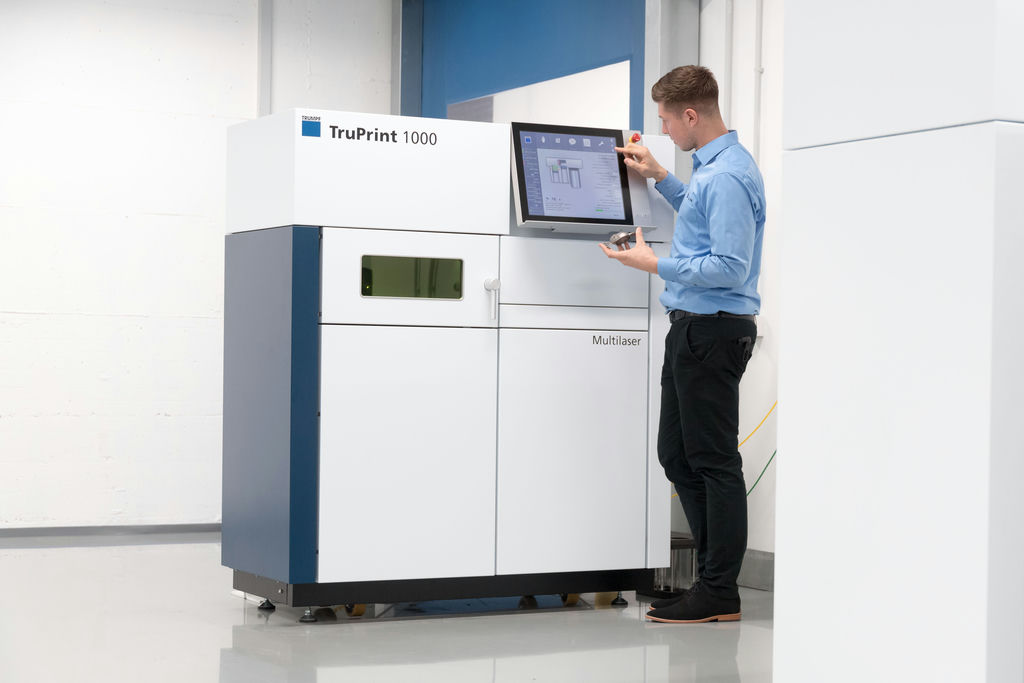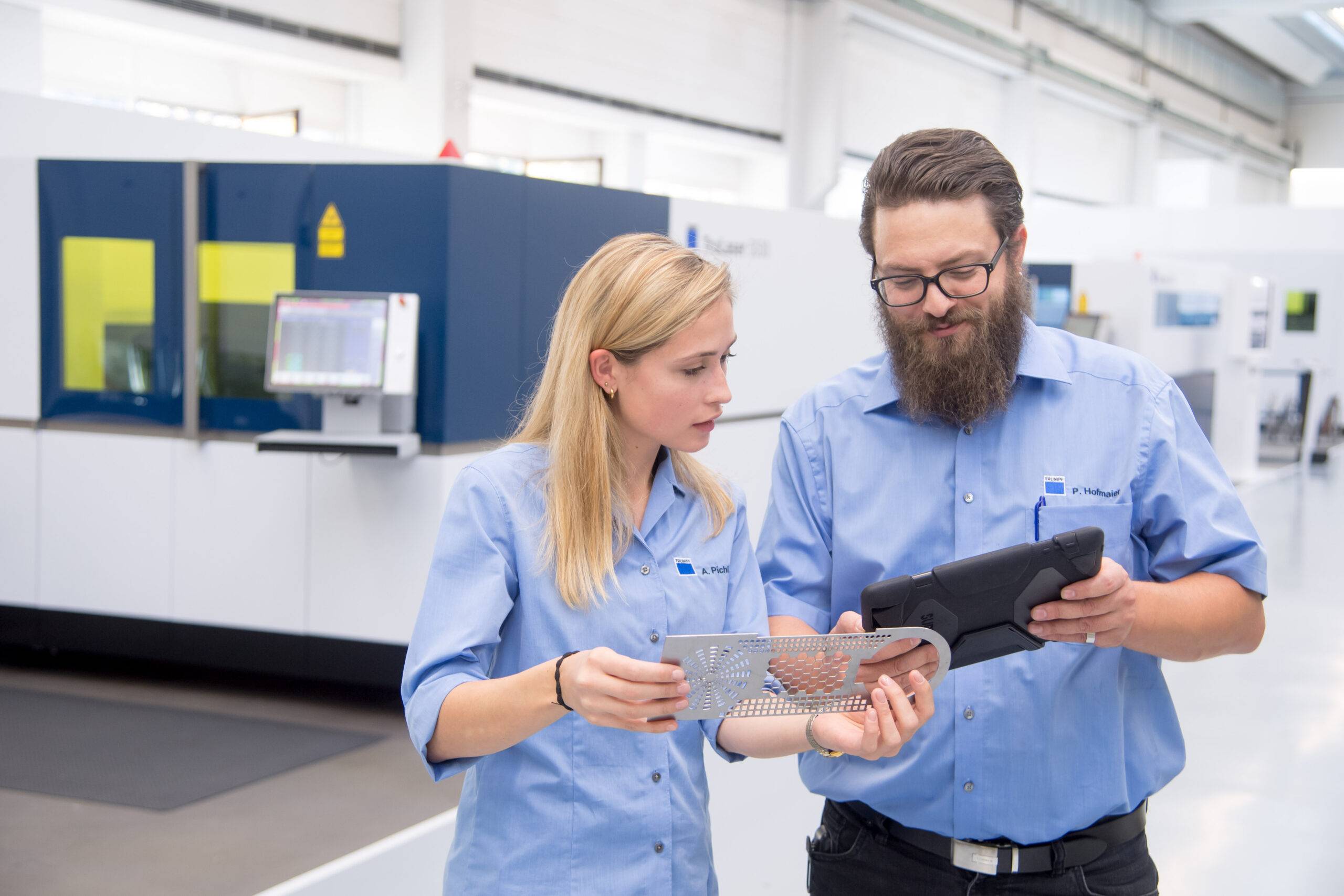At the international Formnext trade fair in Frankfurt, high-tech leader TRUMPF demonstrated how connected 3D printers can boost transparency in digitalized factories. As a leading provider and leading user of Industry 4.0, TRUMPF will now transfer its digitalization solutions to its TruPrint series of 3D printers to optimize additive manufacturing processes.
To enable Formnext attendees to experience first-hand the advantages of connected manufacturing, TRUMPF had connected all the TruPrint 3D printers at its booth to a manufacturing execution system (MES) and a smart ordering platform. This gives employees mobile, real-time access to the printers’ process data and pending orders and facilitates planning and paperless management of production, which boosts transparency, flexibility and ultimately also manufacturing productivity. “TRUMPF is a leader in Industry 4.0. We also show how the 3D printing process chain can be completely digitalized – from tender preparation to printed component,” says Tobias Baur, TRUMPF General Manager Additive Manufacturing with responsibility for technology.
TRUMPF has access to beam sources and equipment for 3D printing
To establish additive technologies in industrial manufacturing, TRUMPF focuses on ensuring that its systems are highly reliable and efficient. “Otherwise, 3D printing methods can’t compete with conventional technologies such as milling and casting,” says Thomas Fehn, TRUMPF General Manager Additive Manufacturing with responsibility for sales.
TRUMPF brings more than 50 years of experience in machine tools to the table. As one of the few manufacturers of 3D printing systems, TRUMPF offers everything under one roof: laser beam sources, optics and machines. “We have everything you need for 3D printing. This is highly advantageous when industrializing these processes because we have access to the technologies that best fit our customers’ needs,” explains Fehn.
In order to fully utilize and mass produce 3D printers, the systems must be automated. It is precisely for this reason that the new TruPrint 5000 has an automated process start, which reduces manual activities when employees prepare the system for printing. This saves time and improves both quality and productivity in additive manufacturing.

Leading position worldwide for small-format machines
Since the last Formnext in November 2017, TRUMPF has seen an increase in orders received for its 3D printing systems. “Leading the pack is the TruPrint 1000: its small-format machine base is currently the best-selling system worldwide,” Fehn says. There is also reported to be enormous demand for TRUMPF’s high-performance TruPrint 5000. TRUMPF also wants to further expand its global 3D printing footprint. With more than 70 subsidiaries around the world, the company is ideally positioned to do just that. “We can directly target particularly North America, the Asia-Pacific business region and Western and Eastern Europe, which are key regions for 3D printing. The customers in these countries will find a local TRUMPF contact who speaks their language,” Fehn says.
Want to know more about Additive Manufacturing in India, visit the Inside 3D Printing Mumbai 2018 show.



